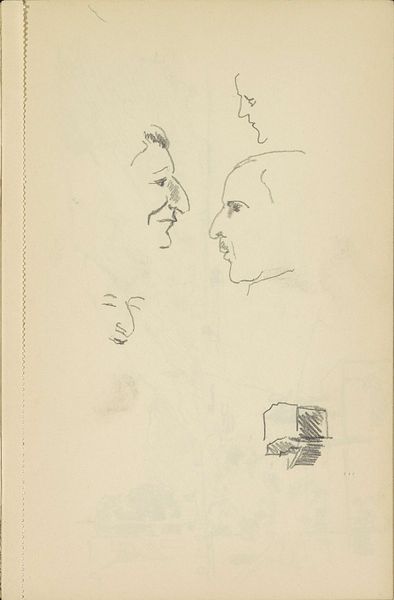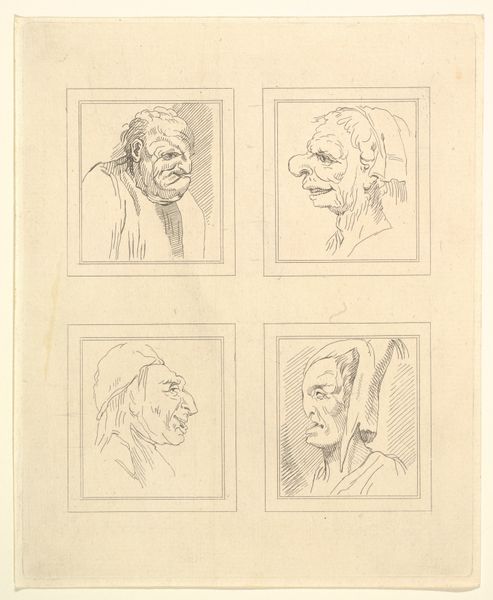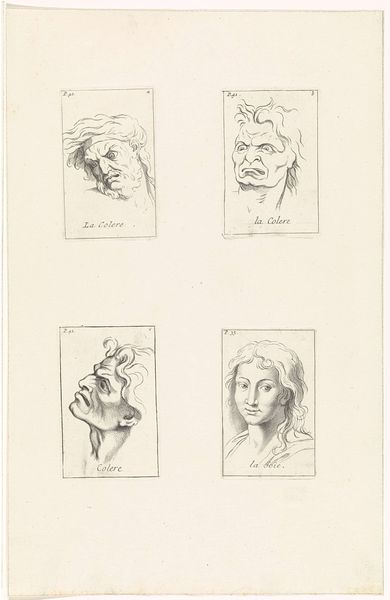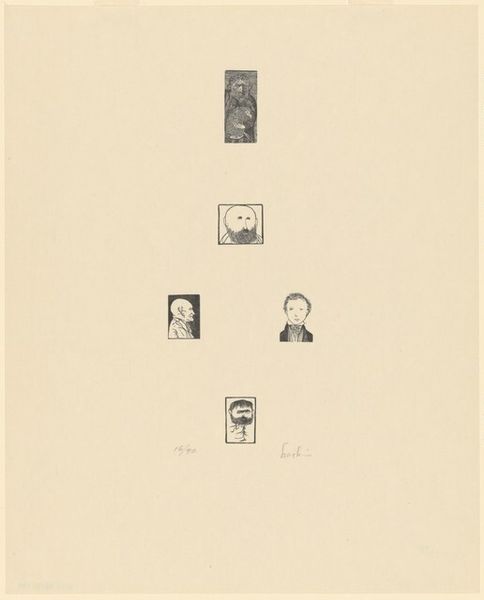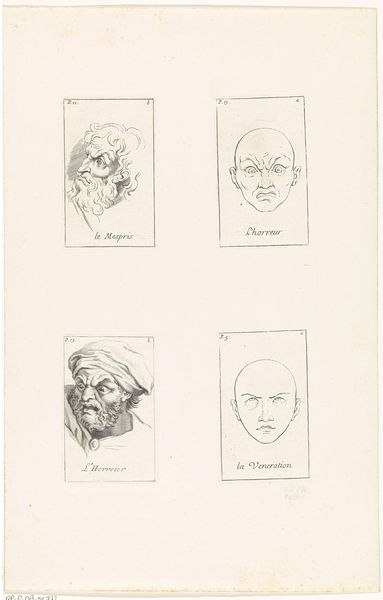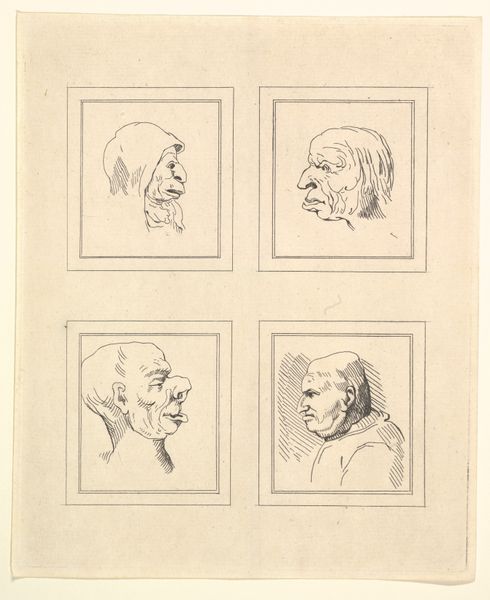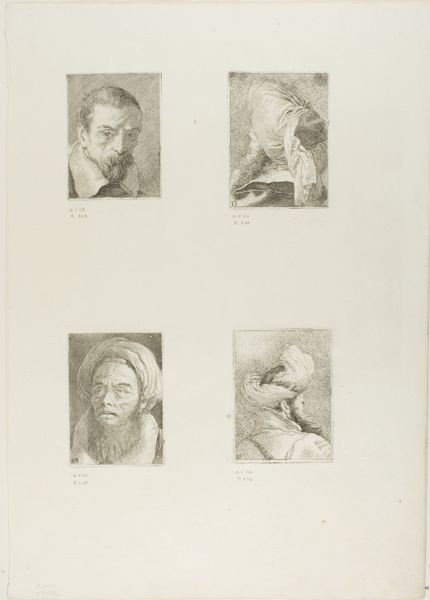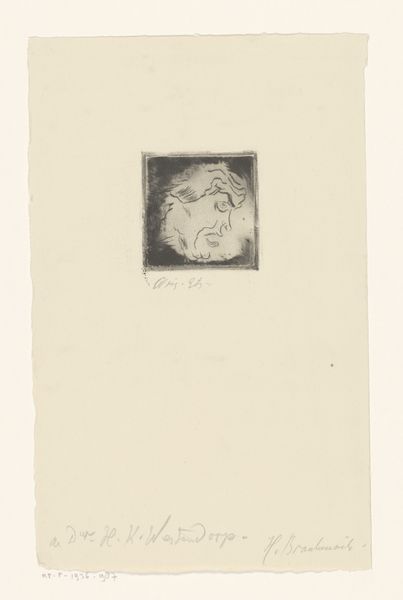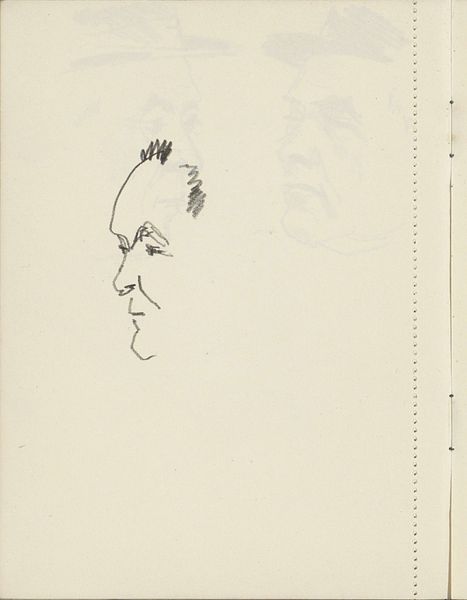
George Richmond Engraving The Shepherd, George Richmond in His Engraving Costume, Blake, after His Visionary Self-Portrait, Blake after a Drawing by John Linnell Possibly 1956 - 1961
0:00
0:00
drawing, print, graphite, engraving
#
portrait
#
drawing
# print
#
line
#
graphite
#
engraving
Dimensions: sheet: 34.29 × 27.62 cm (13 1/2 × 10 7/8 in.)
Copyright: National Gallery of Art: CC0 1.0
Editor: So, this engraving, titled "George Richmond Engraving The Shepherd, George Richmond in His Engraving Costume, Blake, after His Visionary Self-Portrait, Blake after a Drawing by John Linnell," possibly created between 1956 and 1961 by Leonard Baskin... It's quite striking. The isolated portrait studies have a distinctly classical feel. What’s your interpretation of Baskin's decision to depict these different portraits? Curator: It’s fascinating to consider how Baskin, working in the mid-20th century, engages with artistic lineage. This print, featuring portraits, places him in direct conversation with traditions of portraiture while simultaneously questioning them through the distinct groupings of images. How do these fragmented depictions, presented together on a single sheet, reflect shifting perspectives on identity and artistic representation during that period? Editor: That's a great point. Thinking about how identity was perceived then... the separate depictions, especially their placement, creates almost a fragmented sense of self. What were some of the major cultural shifts that influenced this fragmented portrayal of identity? Curator: Post-war anxieties and the rise of existentialism certainly played a role. Artists were grappling with representing the human condition in a world that had been irrevocably changed by conflict and technological advancement. The placement calls to question conventional portraiture's goal of capturing a singular, stable likeness. Was Baskin making a comment about the limitations or evolving nature of artistic identity, especially given his selection of earlier artists as his subjects? Editor: The inclusion of those historical figures adds another layer. I never considered it in terms of limitations of artistic identity! Curator: Consider then, Baskin’s choices – the visual echoes and the ruptures. How do these choices encourage viewers to reflect on both continuity and change? What new perspectives does this lens offer? Editor: I’m going to spend some more time thinking about artistic representation in this historical context. Thank you! Curator: Likewise! Reflecting on the socio-political elements provides richer meaning.
Comments
No comments
Be the first to comment and join the conversation on the ultimate creative platform.
